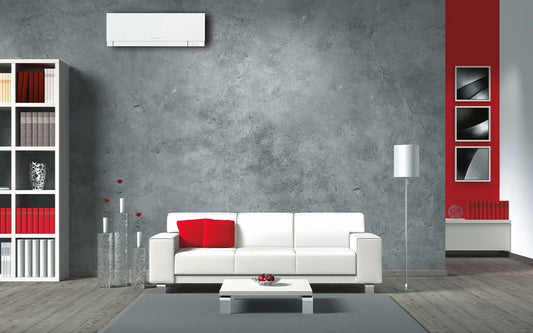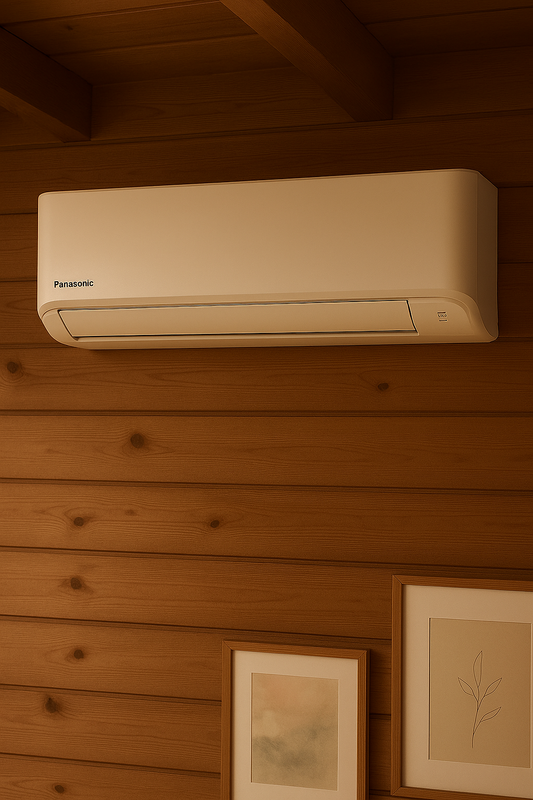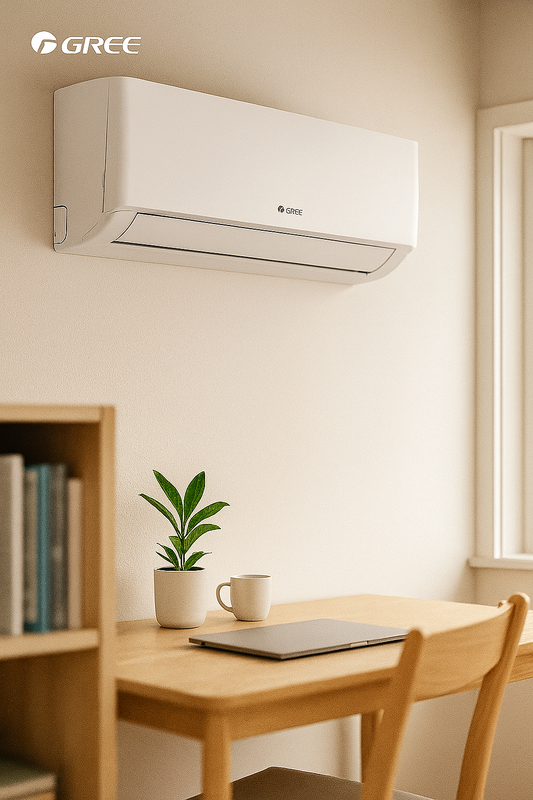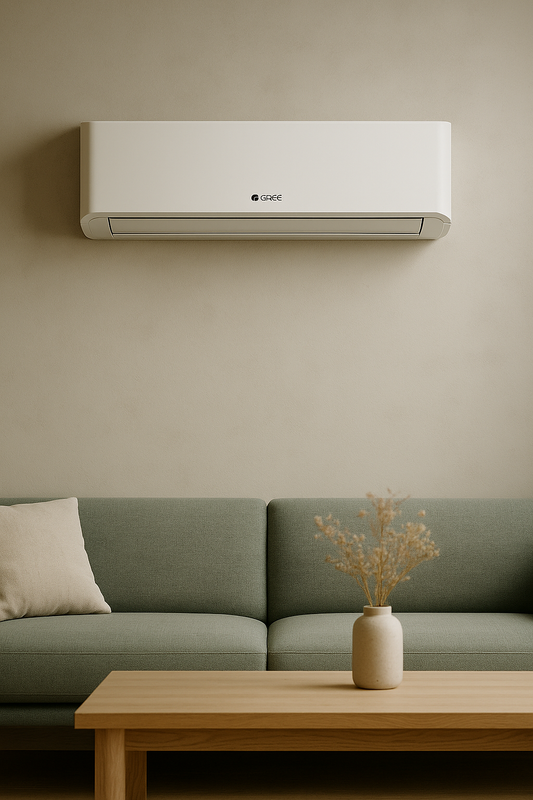Installation av luft-vattenvärmepump: En guide till energieffektiv uppvärmning
Varmepumpar har blivit allt populärare som ett energieffektivt alternativ till traditionella värmesystem. En luft-vattenvärmepump är en typ av värmepump som kan användas för att både värma och kyla ett hem eller en byggnad. I denna artikel kommer vi att utforska processen för installation av en luft-vattenvärmepump, dess fördelar och användningsområden, samt vanliga frågor som kan uppstå kring denna teknik.
Definition och bakgrund
En luft-vattenvärmepump är en typ av värmepump som använder utomhusluften för att producera värme eller kyla inomhus. Genom att utnyttja den naturliga värmen i luften kan en luft-vattenvärmepump ge en effektiv och miljövänlig värmekälla. Värmepumpen består av en utomhusenhet som tar in luft och en inomhusenhet som distribuerar värmen eller kylan till byggnaden.
Fördelar och användningsområden
Installation av en luft-vattenvärmepump kan erbjuda flera fördelar, inklusive minskade energikostnader, mindre miljöpåverkan och jämnare inomhustemperaturer. Denna teknik kan användas för både uppvärmning under vintermånaderna och kylning under sommaren, vilket gör den till ett mångsidigt alternativ för klimatstyrning i hemmet eller kommersiella fastigheter.
- Minskade energikostnader: Luft-vattenvärmepumpar är energieffektiva och kan bidra till att sänka kostnaderna för uppvärmning och kylning av en byggnad.
- Miljövänlig: Genom att utnyttja den naturliga värmen i luften minskar luft-vattenvärmepumpar behovet av fossila bränslen och minskar därmed den totala miljöpåverkan.
- Mångsidighet: Luft-vattenvärmepumpar kan användas för både uppvärmning och kylning, vilket ger en året runt-lösning för klimatstyrning.
Relaterade tekniker, begrepp eller variationer
Det finns flera olika typer av värmepumpar, inklusive mark-vattenvärmepumpar och luft-luftvärmepumpar. Mark-vattenvärmepumpar utnyttjar värmen i marken istället för luften, medan luft-luftvärmepumpar använder utomhusluften för att värma eller kyla inomhusluften direkt. Det är viktigt att förstå skillnaderna mellan dessa olika tekniker för att kunna välja den mest lämpliga för specifika behov.
Vanliga frågor (FAQ)
Hur lång tid tar det att installera en luft-vattenvärmepump?
Installationsprocessen för en luft-vattenvärmepump kan variera beroende på storleken på fastigheten och befintliga värmesystem. Generellt sett kan installationen ta mellan ett par dagar till en vecka, beroende på omständigheterna.
Vilken typ av underhåll kräver en luft-vattenvärmepump?
För att säkerställa optimal prestanda bör luft-vattenvärmepumpar genomgå regelbundet underhåll, inklusive rengöring av filter och kontroll av vätskenivåer. Det rekommenderas att anlita professionell service för att utföra detta underhåll.
Kan en luft-vattenvärmepump användas i kalla klimat?
Ja, luft-vattenvärmepumpar kan fungera effektivt även i kalla klimatförhållanden. Moderna värmepumpar är utformade för att klara av låga utomhustemperaturer och kan vara ett effektivt alternativ i kallare regioner.
Sammanfattning
Installation av en luft-vattenvärmepump kan erbjuda flera fördelar, inklusive minskade energikostnader, miljövänlig drift och mångsidig användning för klimatstyrning. Genom att utnyttja den naturliga värmen i luften kan denna teknik ge en effektiv och hållbar lösning för uppvärmning och kylning av både hem och kommersiella fastigheter.
Installation Process
The installation process of a air-to-water heat pump involves several key steps. First, the outdoor unit needs to be positioned in a location that allows for efficient air intake and exhaust. Next, the indoor unit is installed, typically in a utility room or basement, and connected to the building's heating system. The refrigerant lines and electrical connections are then carefully installed to ensure proper functioning of the heat pump. Finally, the system is tested and commissioned to ensure it is operating optimally.
Energy Efficiency Considerations
When considering the installation of a air-to-water heat pump, it's important to assess the energy efficiency of the building. Proper insulation and air sealing can significantly impact the performance of the heat pump, leading to greater energy savings. Additionally, the selection of a high-efficiency heat pump model and proper sizing for the building's heating and cooling needs are crucial factors in maximizing energy efficiency.
Case Study: Residential Installation
In a residential setting, the installation of a air-to-water heat pump can result in substantial energy savings. For example, a typical single-family home can reduce its heating and cooling costs by up to 50% by switching to a heat pump system. This case study highlights the potential benefits of installing a heat pump in a residential property.
Regulatory Incentives
Many regions offer incentives and rebates for the installation of energy-efficient heating and cooling systems, including air-to-water heat pumps. These incentives can help offset the upfront costs of installation and make the transition to a heat pump system more financially viable for homeowners and businesses. It's important to research available incentives and take advantage of any programs that may apply to the installation of a heat pump.
Installation Process Continued
After the initial installation, ongoing maintenance is essential to ensure the long-term performance of the air-to-water heat pump. Regular inspections and servicing of the system, including cleaning of components and checking for any signs of wear or damage, can help extend the lifespan of the heat pump and minimize the risk of unexpected breakdowns.
Environmental Impact
One of the key benefits of using air-to-water heat pumps is their reduced environmental impact compared to traditional heating systems. By relying on renewable energy from the air, these heat pumps contribute to lower carbon emissions and help mitigate the effects of climate change. This environmental advantage makes them a sustainable choice for heating and cooling needs.
Cost Considerations
While the initial investment in an air-to-water heat pump system may be higher than traditional heating systems, the long-term cost savings can outweigh the upfront expense. Factors such as energy efficiency, reduced maintenance requirements, and potential utility rebates should be taken into account when evaluating the overall cost-effectiveness of a heat pump installation.
Advanced Control Features
Modern air-to-water heat pump systems often come equipped with advanced control features, allowing for precise temperature and humidity regulation. Some models offer smartphone connectivity and remote control capabilities, providing homeowners with greater flexibility and control over their heating and cooling settings.
System Performance Monitoring
Once the air-to-water heat pump is installed, it's important to monitor its performance to ensure optimal operation. Some systems offer built-in monitoring features that allow homeowners to track energy usage, system efficiency, and overall performance. Regularly reviewing this data can help identify any potential issues and ensure the system is operating at peak efficiency.
Noise Levels and Sound Considerations
When installing an air-to-water heat pump, it's essential to consider the noise levels generated by the outdoor unit. Selecting a location that minimizes noise disturbance for occupants and neighbors is crucial. Additionally, some heat pump models offer low-noise operation features, which can be beneficial in noise-sensitive environments.
Backup Heating Options
In regions with extremely cold temperatures, it's important to consider backup heating options to supplement the air-to-water heat pump during peak heating demand or in case of system malfunctions. Common backup heating sources include electric resistance heating, hydronic radiant systems, or traditional furnaces, providing a reliable contingency plan for maintaining indoor comfort.
Remote Monitoring and Control
Advanced air-to-water heat pump systems may offer remote monitoring and control capabilities, allowing homeowners to adjust settings and monitor performance from anywhere via a smartphone or computer. This feature provides convenience and flexibility in managing the heating and cooling system, particularly for properties with varying occupancy or usage patterns.
Professional Installation and Service
For optimal performance and longevity of the air-to-water heat pump, it's advisable to engage professional HVAC technicians for the installation and ongoing service. Certified technicians have the expertise to ensure proper installation, system commissioning, and regular maintenance, maximizing the efficiency and lifespan of the heat pump.



